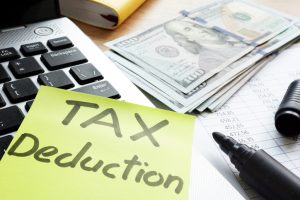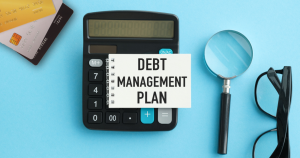The Department of Education’s April 21 announcement to borrowers seemed to leave little room for misunderstanding.
“Student and parent borrowers — not taxpayers — must repay their student loans,” the statement read, in part. “There will not be any mass loan forgiveness.”
Putting aside the argument that taxpayers unfairly foot the bill for forgiveness, a point Education Secretary Linda McMahon made in a follow-up op-ed for the Wall Street Journal, it seems the core message from the Trump Administration is this: If you’re a struggling federal student loan borrower, and you were pinning your hopes on debt being wiped away, forget it.
In and of itself, this is a clear missive. It might even be the kick borrowers need to settle on a repayment strategy. Perhaps you adopt an aggressive approach of making extra payments or a strategically slower approach of making lower payments via income-driven repayment (IDR).
But the Education Department’s message, while clear, lacks a certain context: Student loan forgiveness is far from dead. Here are four reasons why.
1. Existing federal student loan forgiveness programs retain the power to forgive debt en masse.
No, not all 42.7 million borrowers are going to get debt canceled in one fell swoop. President Biden tried that. His ploy of discharging up to $20,000 per borrower in 2022 was struck down by the Supreme Court in 2023.
And yet, millions of borrowers could still access federal loan forgiveness in other ways. To wit: On its way out the door, the Biden Administration claimed it forgave $188.8 billion in outstanding federal loan debt for 5.3 million borrowers — and here comes the key part — “across 33 executive actions.”
In some cases, these executive orders merely sped up the process of awarding federal loan relief programs that were already offered, including:
Public Service Loan Forgiveness
- Who does it work for? Civil servants, nonprofit workers at eligible employers.
- How much does it forgive? Your remaining balance, after 10 years of qualifying monthly payments.
- Is it now under threat? President Trump signed an executive order in March to limit PSLF eligibility for employees of certain nonprofits. The Administration was going through the negotiated rule-making process this spring to potentially make more severe alterations to the program.
Teacher Loan Forgiveness
- Who does it work for? Educators at eligible low-income schools.
- How much does it forgive? Up to $5,000 or $17,500, depending on your education level, certification and area of expertise.
- Is it now under threat? No.
Borrower Defense to Repayment
- Who does it work for? Borrowers who were defrauded by their schools.
- How much does it forgive? Up to the full balance of — and potential reimbursement for past payments toward — federal loans used to pay for the school in question.
- Is it now under threat? No, although more generous rules finalized by the Biden Administration in October 2022 have since been blocked.
Total and Permanent Disability Discharge
- Who does it work for? Borrowers who suffer a total and permanent disability.
- How much does it forgive? Up to your remaining balance — and possible reimbursement for loan payments received by your servicer on or after the date you provide evidence of your disability.
- Is it now under threat? No.
Income-Driven Repayment
- Who does it work for? Borrowers who repay their loans on IDR plans for 20 or 25 years (depending on your plan).
- How much does it forgive? Your remaining balance.
- Is it now under threat? While you can still receive relief on the Congress-created income-based repayment (IBR) plan, discharges on the Pay as You Earn (PAYE) and income-contingent repayment (ICR) plans are on pause, in legal limbo. On the bright side, your qualifying payments on PAYE or ICR can still help you receive forgiveness if you switch to IBR or are pursuing PSLF.
Other federal loan discharges — for a closed school, unpaid refund and false certification — also remain available for borrowers who face these unique scenarios. And they, too, can be awarded en masse: State attorneys general can apply for a false certification discharge on behalf of many of their constituents all at once. Also, each of these discharges would forgive your remaining loan balance for the loan or loans affected.
2. Even Congressional Republicans call for forgiveness under a potentially new, consolidated IDR plan.
Although President Biden’s actions were the culmination of a Democratic party swayed by student loan forgiveness activism, Republicans aren’t necessarily cold to the concept. In fact, Congressional conservatives include IDR-related forgiveness in their current budget reconciliation efforts, known as the Student Success and Taxpayer Savings Plan.
Although it still needs the full support of Republicans in both chambers, it could shrink the menu of IDR plans down to one — the Repayment Assistance Plan (RAP). RAP would award forgiveness after 30 years of qualifying payments (as opposed to 20 to 25 under current plans).
Three decades is a long wait for relief. But if you’re a low-income borrower who’d qualify for bargain-basement payment amounts on RAP — the current proposed minimum is $10 per month — then it could be relief worth waiting for.
Plus, the current proposal would grandfather in progress made on existing IDR plans. So, if you’ve made 20 years of low monthly payments on IBR, for example, you’d only have another 10 years of payments due on RAP until your balance is wiped clean.
There’s a catch
Republicans are proposing to end tax-free student loan forgiveness, except on relief via the borrower’s death or total and permanent disability. The reprieve on federal income taxes, made possible by the American Rescue Plan Act of 2021, is set to expire at the end of 2025. If it does and you receive forgiveness, you could face a hefty federal income tax bill.
Consider the case of one real-life borrower who’s a client of The Institute of Student Loan Advisors (TISLA):
“She’s been on old IBR with a $0 payment because she’s essentially been surviving off of Social Security for the past 25 to 30 years,” said TISLA founder Betsy Mayotte at the mid-May Higher Education Finance Symposium in Alexandria, Va.
“And if her loan is forgiven by the end of this year, which she’s eligible for — she’s made enough payments — she’s going to have a tax bill of six figures. And she’s going to have to file for insolvency. So, that’s my real concern when it comes to forgiveness.”
As with all tax matters, however, it’s wise to consult a certified tax advisor.
3. While not forgiveness per se, student loan repayment assistance is actually on the rise.
The federal government doesn’t have to be the sole source of student loan forgiveness, nor has it been. You can find relief in all sorts of places. Even new places: Some states, in an effort to motivate migration, are known to offer forgiveness for new residents.
Most commonly, if you’re an in-demand essential worker willing to relocate to a high-demand area, you could find forgiveness waiting for you there. The Indian Health Service, for instance, offers up to $50,000 in repayment aid for healthcare professionals in exchange for a two-year service commitment.
Student loan forgiveness also exist for borrowers pursing specific professions. Learn more about programs for nurses, doctors, pharmacists and lawyers.
And there are ways to wipe away some or all of your debt even if you aren’t in a public service profession or if you have more private student loans to repay than federal. Consider: The number of companies that help employees pay off student loans increased from 4 percent in 2019 to 14 percent in 2024, according to an International Foundation of Employee Benefit Plans survey.
4. The politicization of the Education Department means it’s one election away from swinging in the other direction.
Given the life terms of Supreme Court members, it may be difficult for student loan forgiveness activists to find friendly faces on the bench anytime soon. But if forgiveness-supporting politicians are elected, you can bet they’ll try to effect change. Just look at how the swayed Biden Administration went about targeted forgiveness once the road to mass relief became blocked.
| Forgiveness program | Previous administrations | Biden Administration (2021-2025) |
|---|---|---|
| PSLF | 7,000 (since 2017) | 1.07 million |
| Borrower Defense to Repayment | 53,500 (since 2015) | 1.77 million |
| Total and Permanent Disability | 604,000 (since 2017) | 633,000 |
| IDR | 50* | 1.45 million |
| *Given the 20-to-25-year payment requirement of IDR plans, previous administrations had fewer opportunities to forgive debt in this fashion. | Number of borrowers granted loan forgiveness under Biden Administration vs. previous administrations. Source. |
So, it’s reasonable to ask: If a forgiveness-friendly political party controls Congress and/or the White House in the future, to what end would they pursue mass relief?
Remember, it might be forgiveness by another name. For example, there was a limited PSLF waiver (through Oct. 31, 2022) for borrowers to get credit for past payments and an additional IDR waiver (though June 30, 2024) to similarly and retroactively receive credit. Both initiatives made it easier for federal loan borrowers to qualify for forgiveness.
What’s your next step?
No, student loan forgiveness isn’t dead, not even in mass fashion. Still, unless you qualify for one of the programs listed above, your repayment strategy probably shouldn’t hinge on waiting for relief to arrive.
If you’re fortunate enough to be on solid financial footing, consider tips to pay off your student loans faster, perhaps via student loan refinancing. Just remember that refinancing permanently strips federal loans of access to the government-exclusive programs mentioned above.
If you’ve been less fortunate financially, it may be high-time for you, too, to strategize. Never paying student loans comes with serious consequences. And though discharging education debt via bankruptcy is possible, it’s a last-resort option for a reason (it’ll wreck your credit for years to come). If you need help determining your next step, consider contacting your federal loan servicer or working with a certified loan counselor.
Read the full article here












